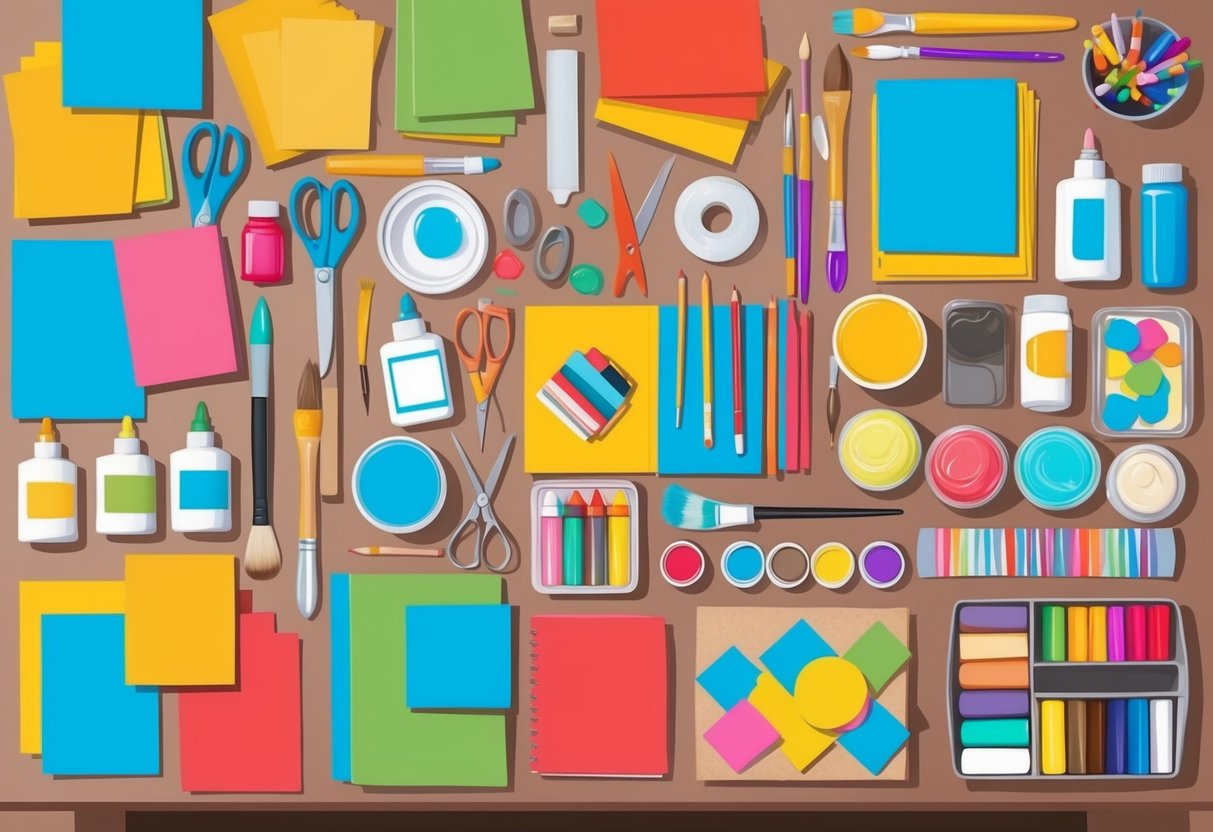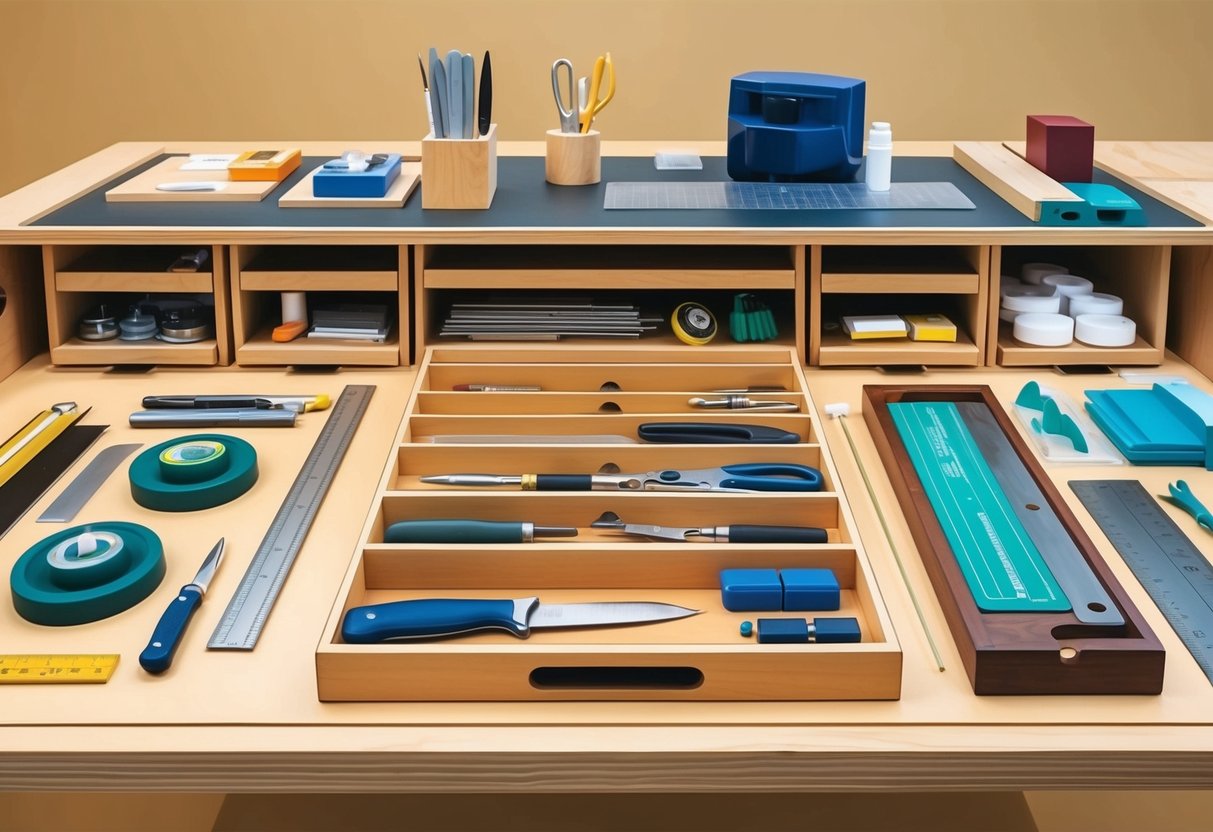
Storage Solutions for Craft Supplies
Keeping craft supplies neat and accessible is essential for both beginners and professionals. The right storage solutions prevent clutter, save time, and help maintain the quality of materials.
Organizers and Containers
Using proper organizers and containers makes it simple to categorize and retrieve craft supplies. Clear storage boxes with divided compartments are ideal for sorting out beads, sequins, and buttons, making it easy to spot small pieces at a glance.
Stackable bins work well for storing fabric, yarn, and papers, allowing crafters to maximize shelf space without losing track of what they own. Labels play a crucial role in this process, especially if someone handles multiple projects at once.
Labeling boxes, drawers, or baskets makes it easy to know exactly where each supply type is stored. Specialty containers, such as washi tape holders and compartment trays for jewelry tools, help further organize items that might otherwise get lost or damaged.
Modular storage systems offer flexibility—parts can be reconfigured as collections grow, which is especially useful for seasonal or ever-changing craft rooms. Popular options include rolling carts and tiered shelving units, which keep everything visible and within reach.
For those interested in even more options, various craft supply storage ideas can transform cluttered spaces into efficient work areas.
Drawstring Bags for Easy Transport
Drawstring bags are a practical choice when it comes to storing and transporting craft supplies. Their lightweight design and expandable shape make them suitable for carrying yarn, small tools, or ongoing handcraft projects.
A key benefit is that the drawstring closure keeps items securely inside, reducing the risk of spills during travel. These bags come in various sizes and materials, from cotton to nylon, so crafters can choose an option that best suits their particular supplies.
Many use smaller drawstring bags for separating paintbrushes, markers, or specialty embellishments. Larger options are used to bundle together entire project kits or bulky craft fabric.
Drawstring bags are also reusable and easy to clean, making them a sustainable storage solution. For group workshops or craft classes, color-coded bags can help keep individual kits organized and ready for distribution.
Their portability and ease of use make them an essential addition to any collection of must-have craft supply storage.
Specialty Tools for Advanced Crafters

Specialty tools like power tools, jigsaws, and hammers enable precise work with a variety of materials. Selecting the right tools for each task improves project efficiency and quality, especially in woodworking, mixed media, and large-scale crafts.
Power Tools for Crafting
Power tools are essential for crafters working with wood, acrylic, and other tough materials. Tools such as electric drills, rotary tools, and even small saws allow for quick material cutting, precise holes, and professional-grade finishes.
For those interested in advanced techniques, an embossing heat tool is useful for paper crafts, while a hot glue gun with temperature control aids in secure assembly of different materials. Safety is crucial when using any power tool.
Always wear protective eyewear and follow manufacturer instructions. Many crafters opt for a compact rotary tool kit, which can handle sanding, grinding, and engraving with various attachments.
Accurate measurement and alignment can be achieved using a supreme ruler or a cutting mat, improving workflow and precision. For more details on must-have equipment for advanced crafters, visit this comprehensive list of crafting tools.
Jigsaw and Hammer Applications
A jigsaw is valuable for cutting curves, intricate shapes, and patterns in wood, plastic, and even thin metals. This tool allows crafters to follow custom templates and create complex decorative elements or functional components for craft projects.
Blade selection is important—finer blades offer smooth cuts for detail work, while coarser blades speed up rough cutting. A reliable hammer is necessary for any project requiring fastening, shaping, or assembly.
Claw hammers are ideal for driving in and removing nails, while smaller hammers, such as a tack or upholstery hammer, help with delicate or detailed work. Using a hammer in combination with a cutting mat and straight edge creates clean bonds and precise assemblies.
Personal protective equipment, such as work gloves and safety goggles, should always be worn. With the right approach, jigsaws and hammers offer control and flexibility for creating custom shapes and robust craft structures.
Learn more about selecting and using these basic tools for crafting projects at Scrapbook.com’s recommended tools.



